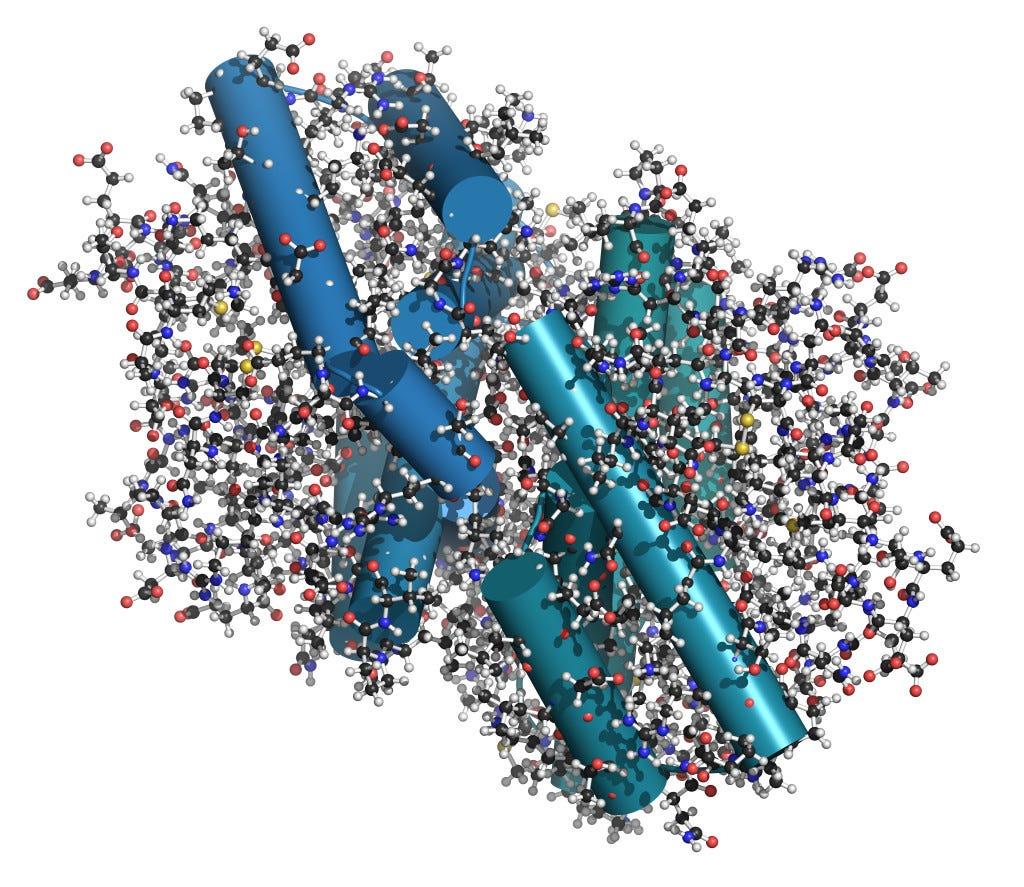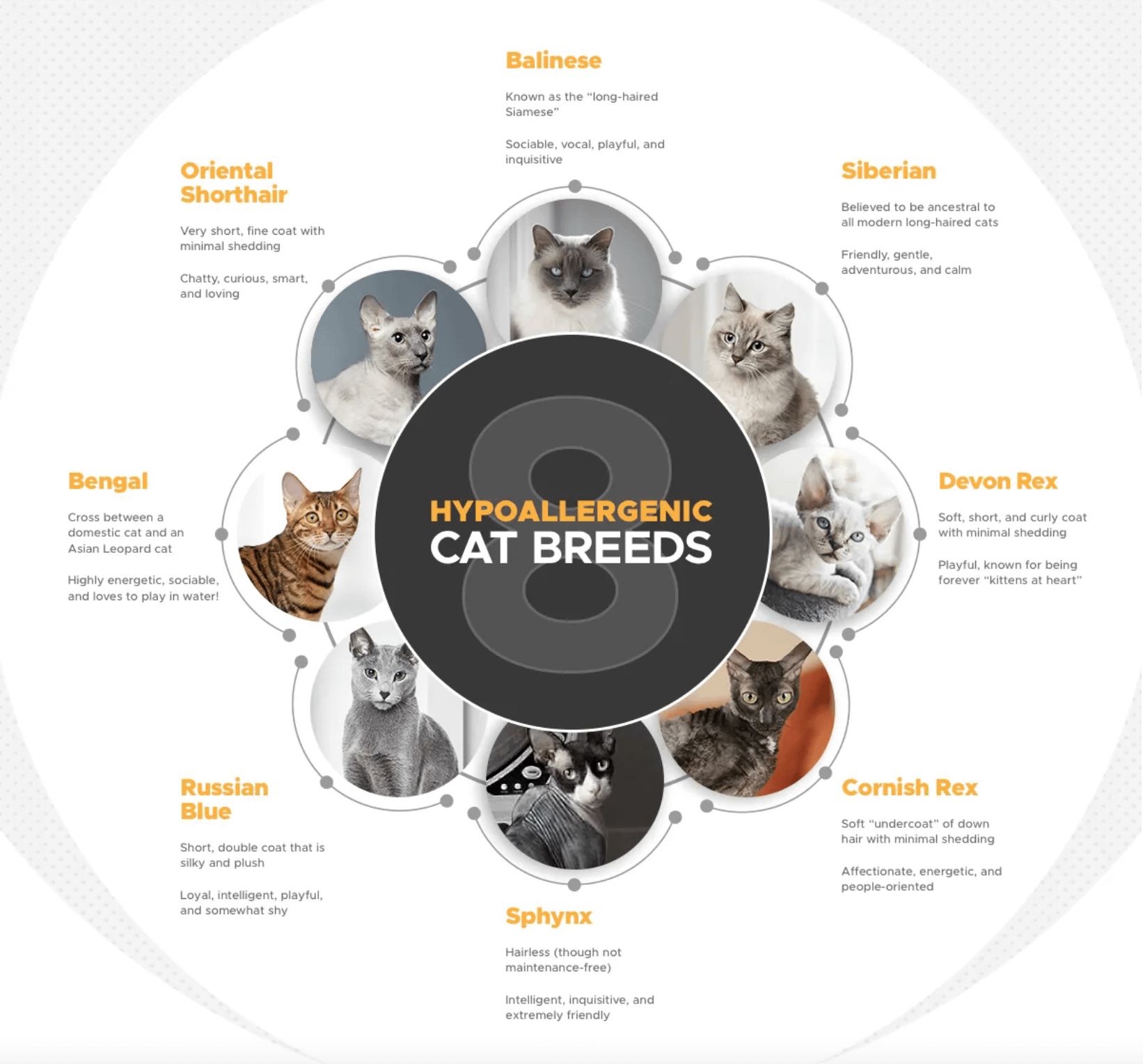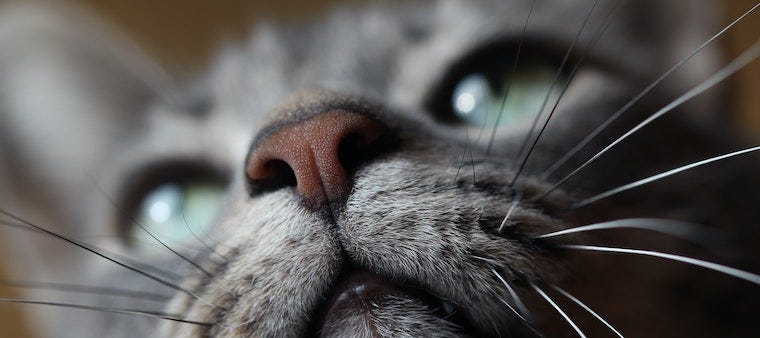There may be no single thing as irritating and aggravating as pet allergies. Of the 10 percent of the U.S. population allergic to pets, about one-third of those people just can't stop themselves and actually keep kitties as pets. Why, oh why, must it be our feline friends, our precious little kitties, who wreak the most havoc on our temperamental immune systems? The answer to this question is actually simpler than you may think. It’s just science.
Cat fur is not the reason you're allergic
Contrary to popular belief, your cat’s fur or hair is not the real reason you are allergic. Though your cat’s beautiful coat can be instrumental in the transmission of what is actually causing your allergies to flare, it’s not the hairs themselves that your body is rejecting. The secret that explains your cat allergy actually lies even deeper.
People with cat allergies are allergic to proteins in a cat's saliva, urine, and dander

According to literature published in the Journal of Feline Medicine and Surgery, the allergenic culprit is actually a protein found in your cat’s saliva, skin, and, less commonly, urine. This protein, called Fel d 1 (Fel d 1 to Fel d 8 have been classified, but Fel d 1 is widely recognized as the most important component), is produced or occurs with any and every one of your cat’s bodily functions, making it nearly impossible to avoid. It is most concentrated in your cat’s face and neck, although routine grooming helps to spread it to other areas of their bodies.
As with all allergies, what’s happening to you when you experience the symptoms of your cat allergy is that your overactive or hypersensitive immune system is responding to these otherwise harmless proteins as if they were dangerous foreign bodies, like a bacteria or virus, and attempting to flush them from your system. This is why you experience coughing, sneezing, teary or itchy eyes, and irritated skin after coming into contact with a cat.
Cat allergies are twice as common as dog allergies
Cat allergies compose the bulk of all pet allergies. They are twice as common as dog allergies, according to the American College of Allergy, Asthma and Immunology. A protein similar to Fel d 1 called Can f 1 occurs in the saliva, urine, and dander of canines, but it just so happens that the feline equivalent is among the smallest and irritatingly stickiest allergen molecules, measuring roughly one-tenth the size of a dust allergen. Live Science explains that the incredibly microscopic size of these little protein molecules allows them to stay airborne for much longer than most other allergens. This, in turn, makes them easy to inhale, causing an allergic reaction.
Many people with cat allergies have kitties anyway
About 10 percent of people are allergic to household pets. For that selfless section of the population who love on pet cats despite being allergic, there's good news and bad news about managing those allergies.
Contrary to popular belief, every cat produces Fel d 1, so no breed is totally hypoallergenic. That said, it is known that non-neutered male cats produce higher levels of the pesky Fel d 1 protein. Female and neutered male cats produce a lower amount of the allergen. For this reason, researchers hypothesize that the Fel d 1 protein may be involved in pheromone signaling, but the purpose of the protein is unknown.
When it comes to hypoallergenic cat breeds, it's now easier to see the underlying mechanism. Instead of it being a breed that doesn't produce the allergen, it's a breed that produces lower levels of it and one that doesn't have the fur or hair to easily transmit the allergen to the air, environment, and, ultimately, you. According to PetMD, Siberian and Balinese breeds top the hypoallergenic cat breed list, since they produce lower levels of Fel d 1. This is followed by breeds like the Sphynx and shorthairs that create less dander and fur to transmit Fel d 1.
How to live with cat allergies
There are several preventative measures that can be taken to mitigate your allergy. Petfinder has helpfully compiled a comprehensive list of the most effective strategies. Here are the top few:
- Clear the air! Invest in a high efficiency particulate arrestance/air (HEPA) filter. Remember that the cat allergen can linger for long periods of time, so continuously straining it out of the air will reduce your exposure to the allergen.
- Make your bedroom a cat-free zone. This means wash or, better yet, replace your bedding. Allergen-proof mattress and pillow covers are highly recommended and can be purchased at most home stores.
- Limit kitty's domain. Establish designated areas where your cat can travel within your house. Keep your cat away from your workstations by closing doors, for example. Make sure to supply plenty of cozy, warm places in kitty-approved areas.
- Decorate wisely. Minimizing upholstered furniture and rugs or carpeting can vastly reduce the amount of allergen buildup in your home. Carpeting, in particular, can accumulate 100 times as many allergens as hardwood floors.
- Brush your cat—outside! If you have an open-air enclosure, use this space to brush your cat. This way allergen-laden dander can disperse and blow away, rather than accumulating in your home.
- Limit contact with the litter box. Remember how the allergy-causing protein is passed through kitty's urine? Stop scooping and switch to a self-cleaning litter box instead.








